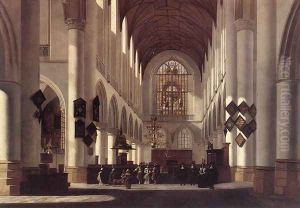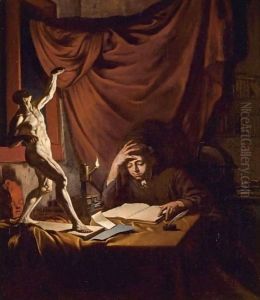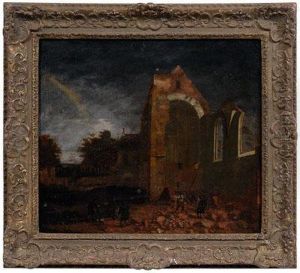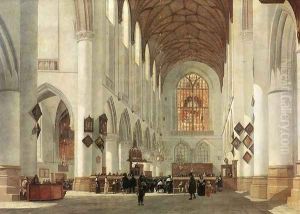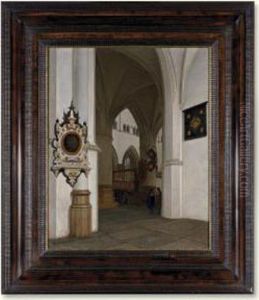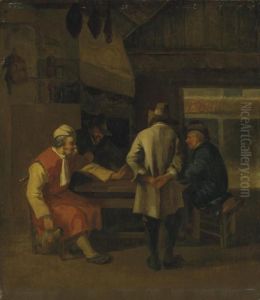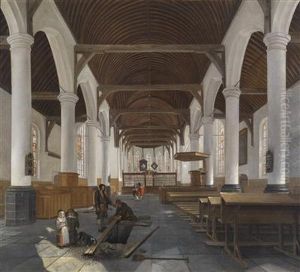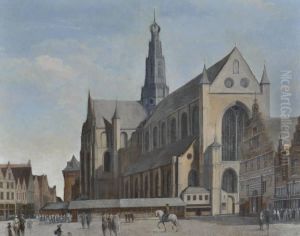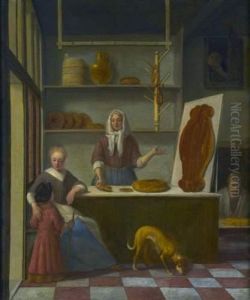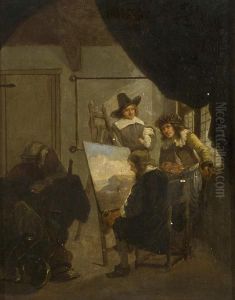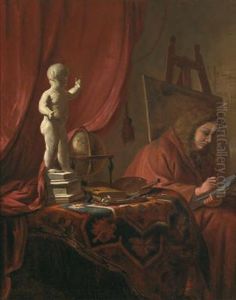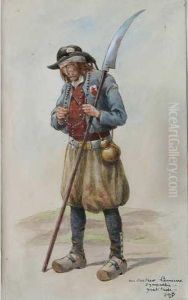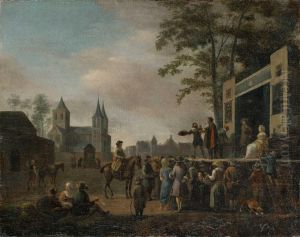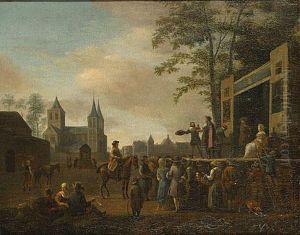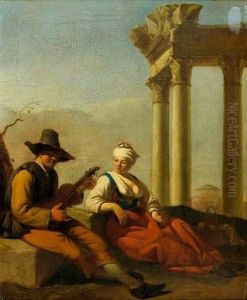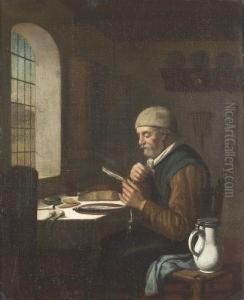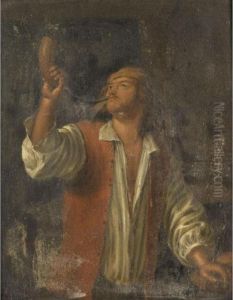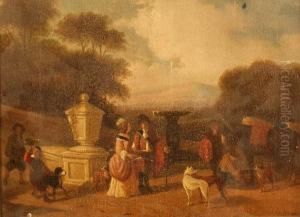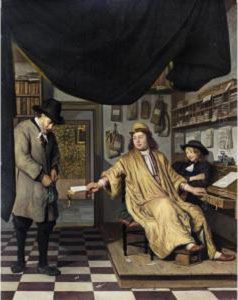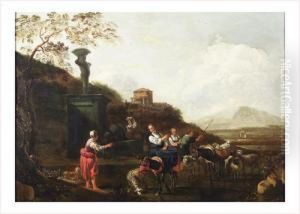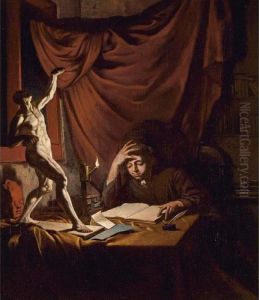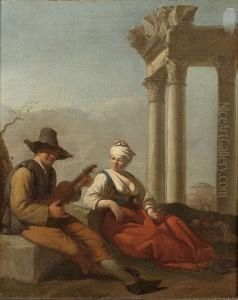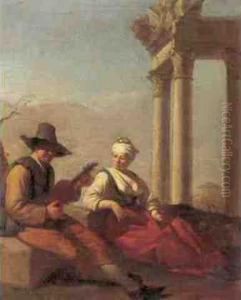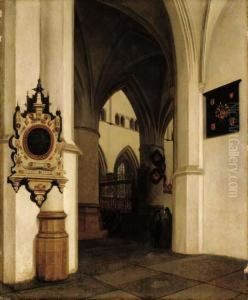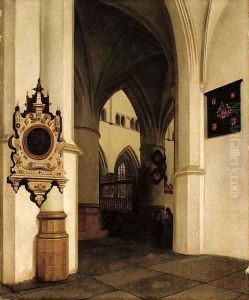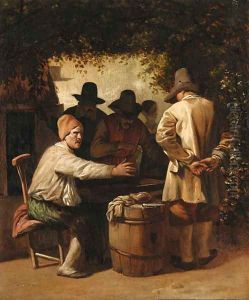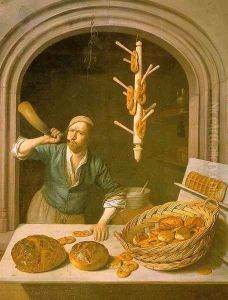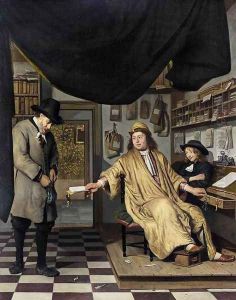Job Adriaensz. Berckheyde Paintings
Job Adriaensz. Berckheyde was a Dutch Golden Age artist, born in 1630 in Haarlem, Netherlands. He was known for his detailed and atmospheric paintings of cityscapes, church interiors, and genre scenes. Job was the younger brother of Gerrit Adriaensz. Berckheyde, who was also a painter and with whom he likely trained. The brothers are often associated together in art historical references, and they shared a similar style, although each had their own distinct focus within their artwork.
Job worked in Haarlem for most of his life, where he became a member of the Haarlem Guild of St. Luke in 1650. His work was greatly influenced by his contemporaries, including artists like Pieter Saenredam, known for his architectural paintings, and Jacob van Ruisdael, noted for his landscapes. Berckheyde specialized in painting views of Dutch cities such as Amsterdam, Haarlem, and The Hague, capturing the urban architecture with a remarkable precision and an eye for the play of light and shadow.
His cityscapes are characterized by an accurate portrayal of buildings, often with a keen attention to perspective and the daily activities of the townsfolk. Notable works include 'The Grote Markt and Sint-Bavokerk at Haarlem' which provides a vista of Haarlem's central square and the impressive Grote Kerk, and 'The Bend in the Herengracht' which shows a view of one of Amsterdam’s most prestigious canals. Berckheyde's paintings are considered to be historical documents of the urban development in the Netherlands during the 17th century.
In addition to cityscapes, Berckheyde also painted a number of church interiors, particularly of the St. Bavo Church in Haarlem. These works are marked by their serene atmosphere and the interplay of light filtering through the church’s windows, illuminating the interior. Job Adriaensz. Berckheyde remained unmarried throughout his life and lived with his brother Gerrit. He passed away in Haarlem in 1693, leaving behind a body of work that continues to be celebrated for its clarity, attention to detail, and contribution to the Dutch Golden Age of painting.
